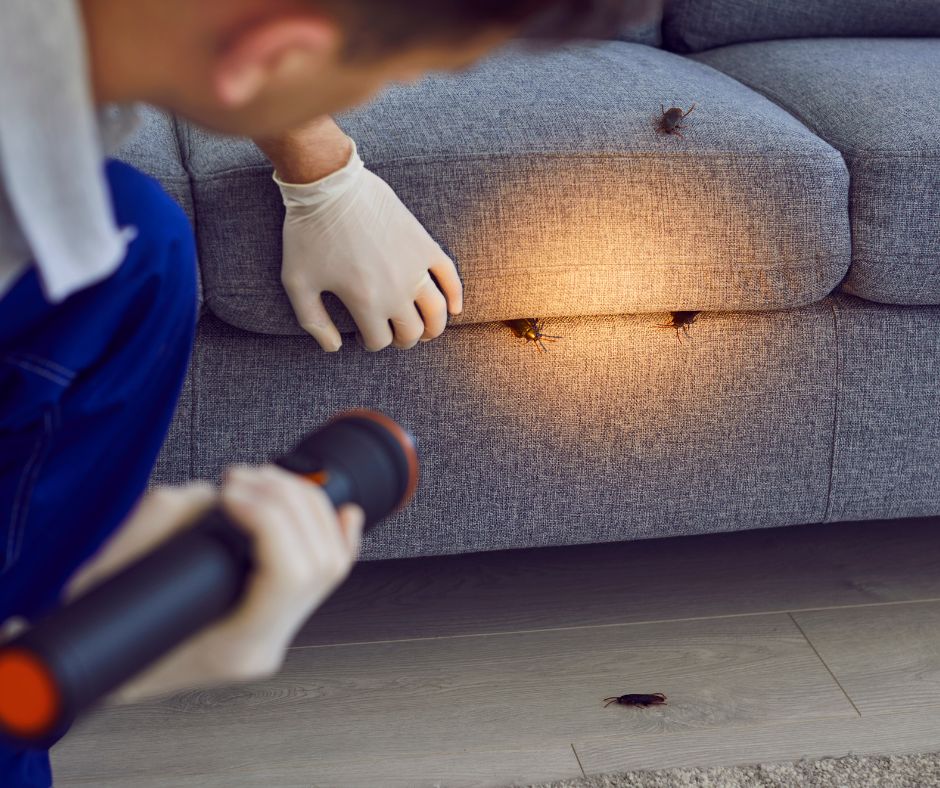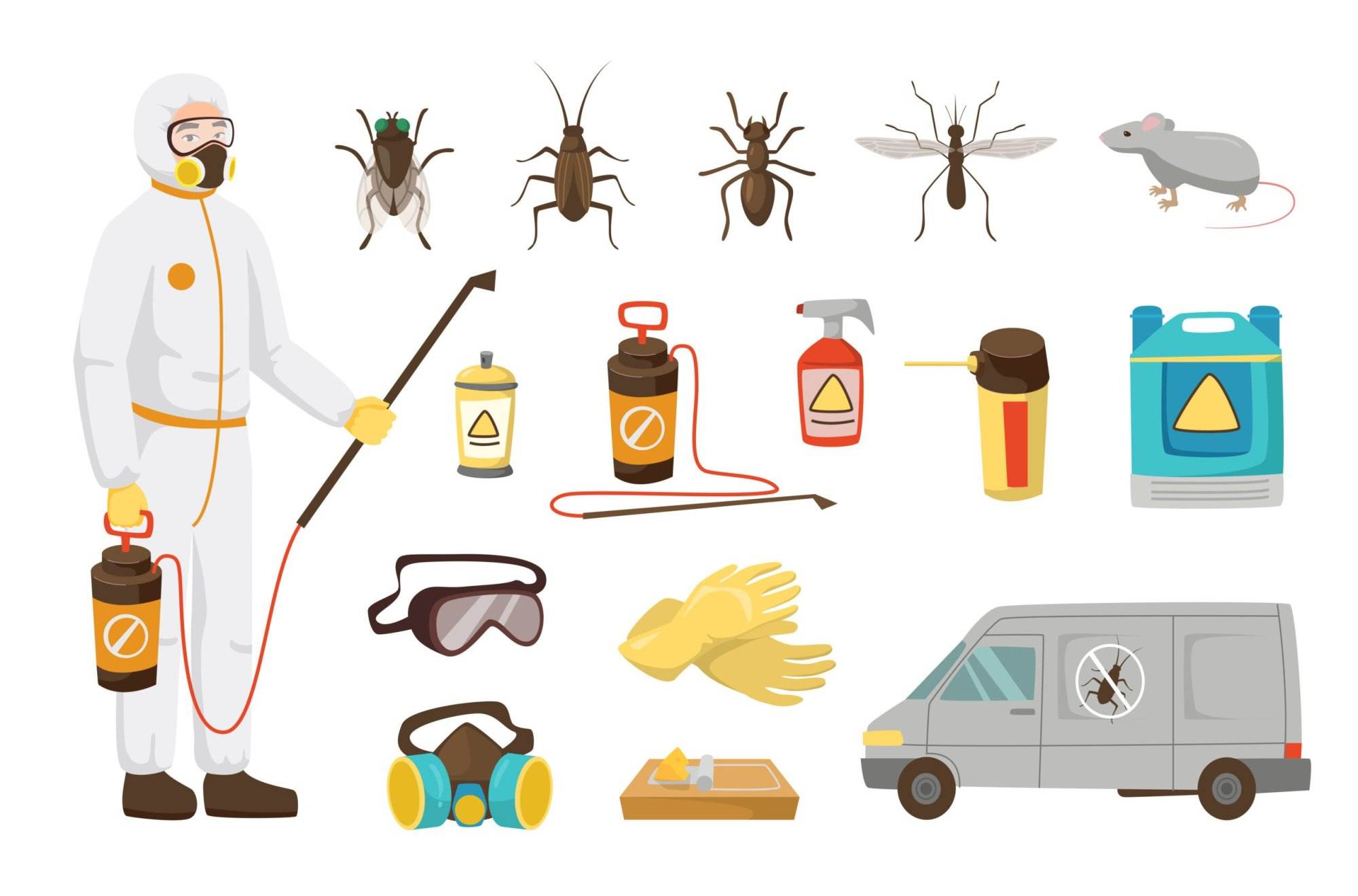Why Pest Control in Charlotte County Is Crucial for Your Home’s Health
Why Pest Control in Charlotte County Is Crucial for Your Home’s Health
Blog Article
Learn Regarding the most recent Breakthroughs in Bug Control and How to Apply Effective Therapy Solutions
In the last few years, the field of parasite control has witnessed significant advancements, driven by the need for effective and sustainable treatment solutions. Ingenious strategies such as Integrated Parasite Monitoring (IPM) incorporate environment-friendly experiment innovative technology, improving both efficiency and ecological responsibility. The integration of wise modern technologies and DIY approaches has actually encouraged people to take on insect concerns extra properly. As we check out these developments, it ends up being important to recognize how best to implement these methods in different setups to achieve optimal results. The effects for bug management methods could be transformative.
Eco-Friendly Bug Control Options
Recently, the demand for green pest control choices has risen as home owners and companies alike look for sustainable alternatives to typical chemical therapies. This change is driven by expanding ecological awareness and a desire to minimize the wellness risks connected with artificial chemicals.

Green insect control techniques incorporate a series of techniques that focus on the usage of natural substances and methods. Integrated Pest Administration (IPM) is one such technique, incorporating biological, cultural, and mechanical techniques to take care of insect populations while lowering dependence on chemicals (Wildlife removal services). This holistic method emphasizes avoidance via habitat adjustment and the introduction of all-natural killers, therefore cultivating a well balanced community
Another preferred option is making use of herb chemicals stemmed from plants, which tend to be less hazardous to non-target microorganisms. Products like neem oil and diatomaceous earth have obtained traction for their performance in managing pests while posing minimal risks to human wellness and the setting.
Furthermore, exclusion techniques, such as sealing entry factors and keeping tidiness, play a critical duty in environment-friendly parasite administration. By adopting these sustainable practices, companies and individuals can successfully handle bugs while promoting a healthier earth for future generations.
Smart Innovation in Bug Monitoring
Advancement is reshaping the landscape of parasite administration, with wise modern technology becoming an essential force in improving efficiency and efficiency - Wildlife removal services. The assimilation of Internet of Points (IoT) devices, expert system (AI), and data analytics is revolutionizing exactly how pest control professionals approach problems
Smart catches geared up with sensing units can detect pest activity in real-time, sending out prompt signals to drivers. This allows for prompt reactions, minimizing damage and decreasing the demand for comprehensive therapies. In addition, AI formulas examine historic data to anticipate parasite habits, making it possible for proactive interventions based on ecological conditions and invasion patterns.
Drones and computerized automobiles are additionally playing a considerable role in parasite management, supplying airborne assessments of large areas, identifying hotspots, and also dispersing targeted therapies. These technologies not only improve operations yet additionally boost safety and security by restricting human exposure to potentially dangerous chemicals.
In addition, mobile applications encourage customers to keep track of parasite activity and accessibility expert guidance, cultivating a joint strategy to pest administration. Generally, the adoption of smart modern technology is establishing a brand-new criterion in bug control, stressing data-driven choices and sustainable techniques that eventually benefit both home owners and specialists alike.
Integrated Pest Administration Methods
Integrated Pest Administration (IPM) utilizes a holistic method to pest control, incorporating numerous approaches to properly handle insect populations while lessening risks to human wellness and the environment. IPM focuses on understanding the pest life process, their all-natural adversaries, and the ecosystem in which they prosper.
One of the fundamental elements of IPM is checking pest populaces with normal assessments and data collection. This permits the identification of bug limits, figuring out when intervention is necessary. Social practices, such as plant rotation, environment, and hygiene control, are essential in lowering pest occurrence and promoting plant wellness.
Mechanical controls, consisting of catches and obstacles, are likewise crucial in IPM. These methods can physically remove or hinder parasites without the use of chemicals. When needed, the cautious application of chemical controls is utilized, concentrating on targeted treatments that decrease environmental effect.
Education and learning and cooperation among stakeholders, including farmers, bug control professionals, and the neighborhood, are important for the effective application of IPM approaches. By focusing on sustainable methods, IPM not just addresses pest concerns but additionally cultivates a much healthier ecosystem.
Biological Control Methods
Various organic control approaches are significantly acknowledged for their effectiveness in handling parasite populaces while promoting eco-friendly balance. These strategies harness natural killers, parasites, and virus to minimize pest numbers without relying upon synthetic chemicals. The introduction of ladybugs can efficiently manage aphid populaces, while nematodes target soil-dwelling bug larvae.
Furthermore, making use of microbial pesticides, such as Bacillus thuringiensis (Bt), provides an eco-friendly choice for handling caterpillar bugs. These products particularly target pest varieties, decreasing harm to advantageous bugs and pollinators. Conservation biological control stresses boosting habitats for all-natural adversaries, such as birds and valuable pests, thus motivating their visibility in farming systems.
Study proceeds to reveal cutting-edge strategies within this area, such as the use of scents to disrupt pest breeding patterns or the development of biocontrol representatives through genetic modification. Carrying out these approaches can lead to sustainable bug administration practices that alleviate the reliance on chemical treatments, eventually fostering healthier communities. As awareness of these techniques grows, they are coming to be right here indispensable parts of incorporated parasite monitoring green rodent control (IPM) approaches, using an equilibrium in between efficient bug control and ecological stewardship.
Do It Yourself Parasite Control Solutions
As homeowners seek effective means to deal with parasite problems, DIY pest control remedies have actually acquired popularity for their availability and cost-effectiveness. These approaches empower people to resolve infestations utilizing conveniently available products and strategies, often without the need for expert treatment.

Furthermore, keeping appropriate hygiene and normal examinations can stop bug entry and nesting (Wildlife removal services). Easy techniques, such as securing fractures, removing food sources, and decluttering, can dramatically lessen insect populaces. Traps, both homemade and readily offered, can also supply efficient remedies for surveillance and managing certain pests like pests or rodents

Verdict
The assimilation of eco-friendly insect control alternatives, wise innovation, and cutting-edge administration strategies presents a detailed approach to efficient bug management. By accepting Integrated Bug Management (IPM) and using biological control approaches, together with DIY services, liable and sustainable insect control can be accomplished.
Environment-friendly parasite control methods include a variety of helpful site techniques that prioritize the usage of all-natural substances and techniques. Integrated Bug Management (IPM) is one such technique, combining biological, social, and mechanical tactics to handle pest populaces while reducing reliance on chemicals. As recognition of these methods grows, they are becoming important elements of incorporated insect monitoring (IPM) techniques, using a balance in between effective pest control and ecological stewardship.
The combination of environment-friendly pest control alternatives, wise modern technology, and innovative monitoring approaches offers a thorough technique to efficient bug monitoring. By embracing Integrated Pest Administration (IPM) and making use of biological control approaches, alongside Do it yourself services, responsible and lasting insect control can be achieved.
Report this page